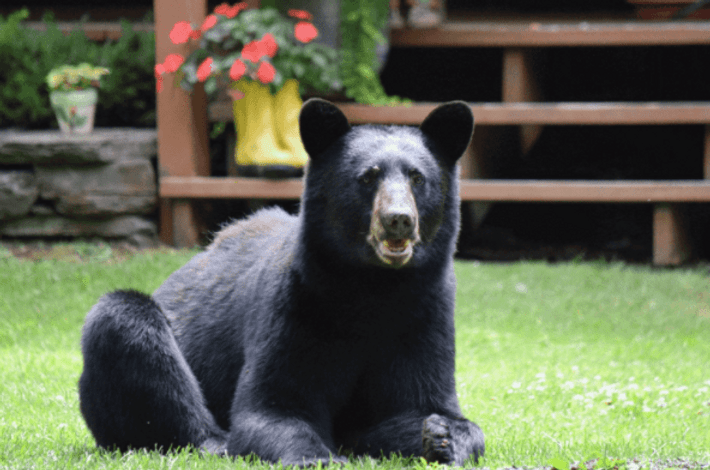The following statement comes from Ainsley Mackenzie ’22, Sabrina Lin ’21, Nawoo Kim ’22, and Rachel Lovejoy ’23, undergraduate researchers of the Kristensen lab. As they monitor the population dynamics of black bears in Massachusetts, this statement discusses how they collaborate with Massachusetts residents to collect data and how you can help.

Our lab seeks to better understand the distribution and population dynamics of black bear populations in Massachusetts. Last summer, we embarked on this process through empirical research methods such as noninvasive mark and recapture studies. However, the inclusion of more data (telemetry, camera trap data, etc.) can contribute to more accurate estimates of population size. As our project began to expand, our conversations naturally turned towards the notion of citizen science—scientific research That isn’t limited to those explicitly working in a lab.
Citizen science, according to leading expert Professor Rebecca Jordan and colleagues, comprises “partnerships between those involved with science and the public in which authentic data are collected, shared, and analyzed…it is both the desire to create or grow data sets on temporal and spatial scales and the desire to educate members of the public.”
Citizen science offers many benefits for scientific research—citizen-collected data not only helps us answer some of our questions but also inspires further questions about bear behavior as well as other mammal behavior in human-populated areas. In our case, it allowed us to gather large amounts of data on mammal distribution and behavior. Involvement in our project has allowed community members to better understand the mammals in their area and how to safely interact with them. Many of our volunteers in fact expressed interest in learning how to protect our local wildlife!
Drawing on methodologies and literature from previous citizen science projects, we developed a few different ways for community members to participate: reporting bear sightings, submitting trail/fixed camera photos, and recording hikes and marking locations where any signs of mammal behavior (scat, tracks, etc) were spotted. This information was compiled onto our newly created Mammals of the Pioneer Valley website as well as on our other website MassBears, which gives citizens access to places to upload bear sightings and sign up to volunteer for our projects.
The Amherst community has been an incredible asset to this project this summer. Since our website went live at the end of June, we have received 300+ bear sightings and 150+ photos and videos which are being used to better estimate population size and understand bear behavior! We cannot wait to see the project grow even more, and we invite everyone from the Amherst community to be a part of this exciting process. For more information, go to our website Mammals of the Pioneer Valley website, or fill out a Volunteer Interest form. Thank you and have a wonderful day!